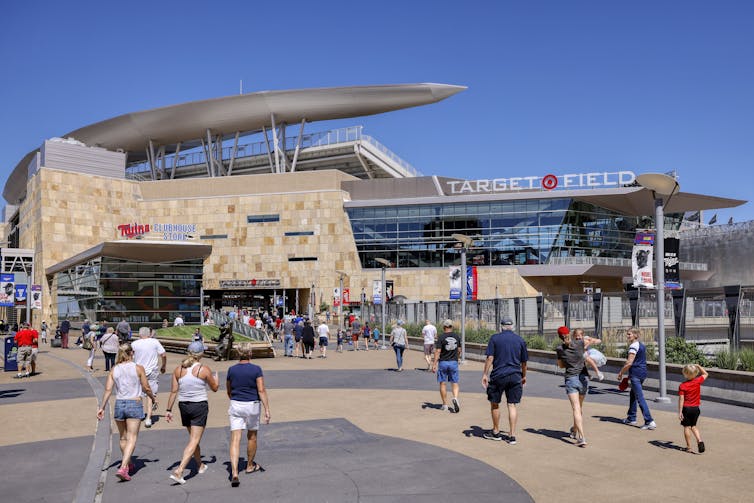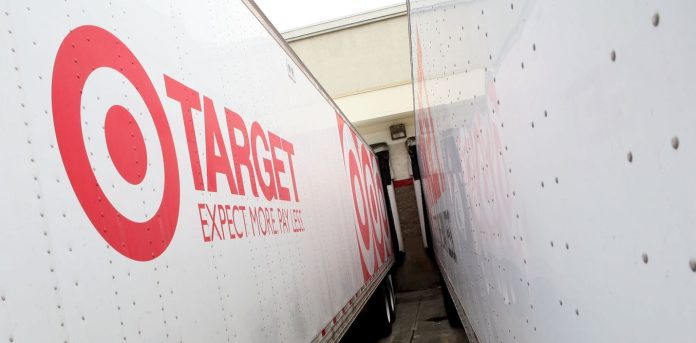Large retailers don’t have smokestacks, but they generate a lot of pollution − and states are starting to regulate it

Did you receive a mail-order package this week? Carriers in the U.S. shipped 64 packages for every American in 2022, so it’s quite possible.
That commerce reflects the expansion of large-scale retail in recent decades, especially big-box chains like Walmart, Target, Best Buy and Home Depot that sell goods both in stores and online. This has led to the growth of distribution centers that fulfill these orders. While mail-order commerce is convenient, these centers also have harmful impacts, including traffic congestion and air and water pollution.
I study environmental history, and I am part of a group of scholars examining the environmental impacts of big-box stores like Walmart, Target, REI and Bass Pro Shops. Sustainability is a hot topic in the retail sector, but my research on the history of Target – the sixth-largest retailer in the U.S. – shows how retail companies have largely escaped the kinds of environmental regulations that affect other sectors such as manufacturing.
Indirect pollution sources
Doing business on Target’s scale, with US$108 billion in sales in 2022, creates a big physical footprint. The company has nearly 2,000 stores in the U.S. that cover over 240 million square feet of retail space, not including parking lots. Its 55 supply chain facilities add an additional 60 million square feet. For perspective, 1 million square feet is slightly larger than 15 football fields.
Target, which originated as a dry goods company in 1902, has been a leading retail voice for over a century. The company played a prominent role in the 1970s as Congress expanded federal power to regulate air pollution nationwide under the Clean Air Act of 1970.
This law gave the Environmental Protection Agency broad authority to identify and regulate air pollutants and to set air quality standards that would protect public health. To meet those standards, in the mid-1970s lawmakers and regulators considered adopting transportation controls that could address indirect pollution sources – entities that did not generate air pollution themselves but attracted large numbers of sources, such as cars and trucks, that did. Examples included airports, highways, sports stadiums and shopping centers.
Target’s parent company, Dayton Hudson, operated numerous shopping centers and other retail chains. One of its executives, George Hite, was a leading spokesperson against regulating indirect pollution sources.
From 1974-1977, Hite testified on behalf of large retail trade groups during a series of congressional hearings, arguing that the proposed regulations were unfair and would undercut sound planning. Hite asserted that because shopping centers were one-stop destinations for consumers, they actually reduced air pollution from consumers’ trips.
Ultimately, indirect source regulations did not become part of the Clean Air Act amendments of 1977. As a result, retail continued to expand, unconstrained by major federal environmental laws.

Big-box boom
Big-box discount stores like Kmart, Walmart and Target began outcompeting shopping centers in the 1980s because of their low prices and convenience. The biggest chains expanded nationally, driving many smaller local stores out of business.
These companies relied on a new type of warehouse: the distribution center, which used computer technology to make supply chains more efficient. Compared with earlier warehouses, distribution centers were larger and focused on efficient movement of goods rather than storage.
In the 1990s, communities across the country began organizing to slow the expansion of big-box stores. Most efforts focused on opposing individual stores and ignored the rising number of distribution centers. One exception was in the Wisconsin town of Oconomowoc.
Located along I-94 between Madison and Milwaukee and surrounded by glacial lakes, Oconomowoc was a former vacation destination for wealthy Midwesterners that evolved into a commuter town. When Target announced in 1993 that it had selected Oconomowoc as the site for a new, million-plus-square-foot regional distribution center, residents quickly organized to preserve the area’s pastoral setting.
State and local officials refused to reconsider the deal they had reached with Target, which included grants and other tax subsidies. In response, opponents filed multiple lawsuits.
Plaintiffs cited the planned center’s environmental impacts, including potential threats to groundwater and air emissions from long-haul, diesel-fueled trucks. However, state and federal courts ultimately dismissed their cases. Judges ruled that the Clean Air Act did not attribute delivery truck emissions to the distribution center, and the Clean Water Act did not cover a retention pond that was planned to collect runoff from the center’s parking lot.
Members with Associated Electric running conduit for conveyor controls for the Target Distribution Center Expansion in Oconomowoc. #IBEW #wiunion #1u pic.twitter.com/QoDLYd5H0a
— IBEW Local 494 (Milwaukee) (@ibewlocal494) August 23, 2021
Probing retail’s environmental costs
Today, retail supply chain infrastructure is moving into urban areas. Target and other retailers are meeting new opposition, including pushback from environmental justice groups, which argue that these companies’ operations increase traffic and degrade air quality.
In a 2024 report, the nonprofit Environmental Defense Fund and ElectrifyNY, a coalition working to electrify transportation in New York state, found that 1 in 4 people statewide lived within half a mile of a retail distribution center, and that these facilities generated over 170,000 truck trips per day. The report endorsed proposed state legislation that would classify storage and distribution centers over 50,000 square feet as indirect pollution sources and require them to reduce transportation-related air emissions.
In Southern California, the powerful South Coast Air Quality Management District, which regulates regional air quality, has taken this step with Rule 2305. This regulation is the first in the U.S. to address emissions generated by trucks traveling to and from large warehouse facilities.
The rule focuses on reducing ozone, a major contributor to smog, and fine particulate matter. Both of these pollutants are formed from chemicals in diesel exhaust and are harmful to human health.
Rule 2305 was adopted in 2021 and survived a legal challenge from trucking companies in 2023. To avoid fines of up to $10,000 per day, hundreds of warehouse operators must earn points for taking steps from a list of actions to reduce local air pollution.
Options include using low-emission or electric vehicles and installing charging stations on-site, or placing air filters in local buildings. Point targets are based on each facility’s size, number of truck trips and other factors.
View this post on Instagram
Shopping carts vs. smokestacks
Big-box retailers maintain that they can manage their facilities’ environmental impacts without government intervention or structural change. For example, Target touts investments to make its facilities more energy efficient and place solar panels on its stores and distribution centers. Yet, Target’s indirect emissions dwarf these gains.
For example, in 2022 the company generated nearly 6 million metric tons of carbon dioxide-equivalent greenhouse gas emissions in transporting goods from its distribution centers to consumers. Including emissions generated when suppliers shipped these goods to Target’s distribution network more than doubled this figure.
In comparison, the company estimated that the electricity it purchased to power its facilities in 2022 generated just over 1.5 million metric tons of carbon dioxide-equivalent emissions. Using this number as a base, I estimate that Target’s claim the same year of using 60% of electricity from renewable resources offset emissions by some 2.25 million metric tons.
And Target is only one of numerous retailers. According to a 2022 report by the World Retail Congress and Boston Consulting Group, this sector as a whole “has some way to go before it can claim truly green credentials. … Most [large retailers] have yet to put in place comprehensive sustainability agendas.”
The goods that consumers buy, and the ways in which they buy them, drastically affect the environment. In my view, the retail sector’s impacts on air, water, waste generation and Earth’s climate call for national-level responses. Big-box stores may not look like smoke-belching factories, but their companies’ operations affect the environment in ways that have become too big to ignore.![]()
Johnathan Williams, Assistant Professor of History, University of Northern Iowa
This article is republished from The Conversation under a Creative Commons license. Read the original article.



